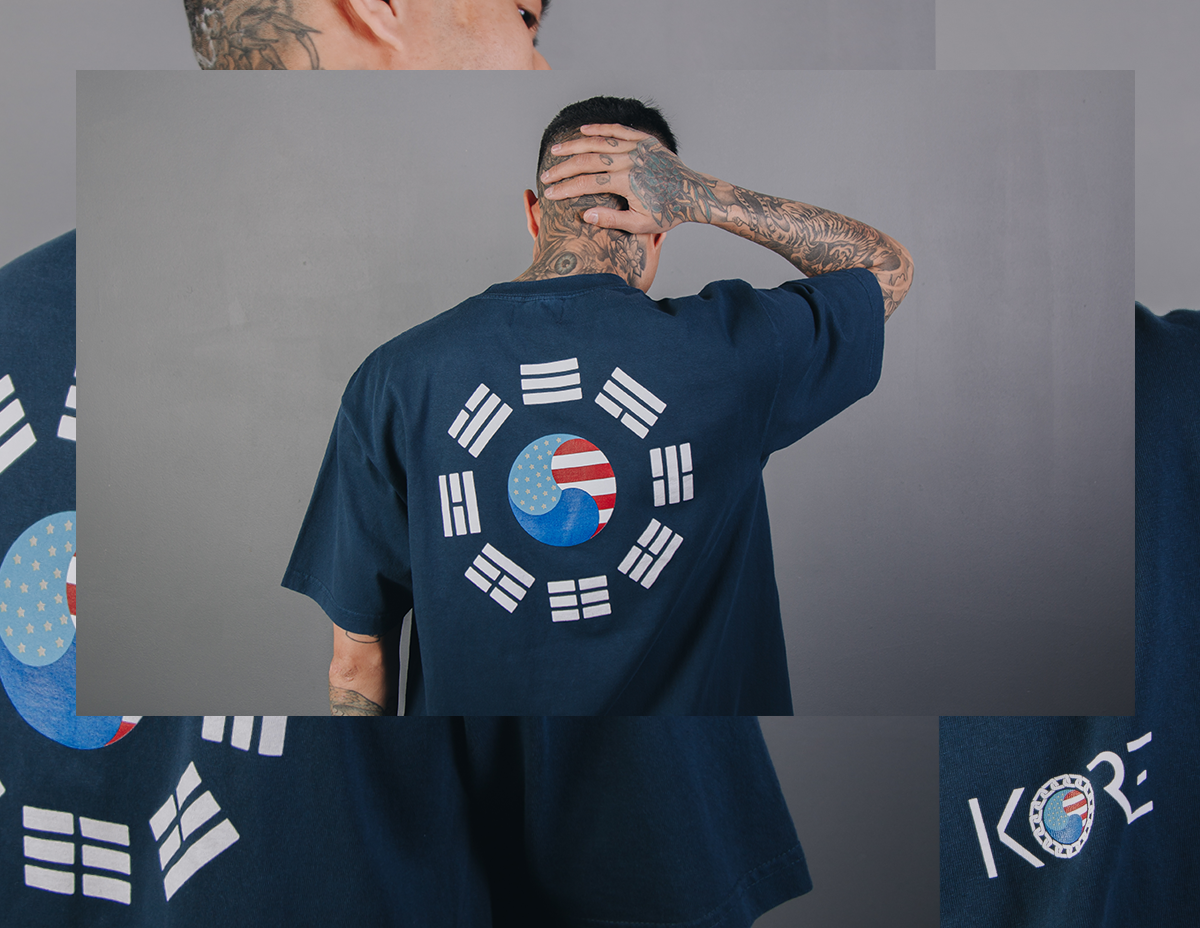The eight trigrams, or palgwe, are symbols that hold great importance in Korean culture. Throughout history, the eight trigrams have continuously surfaced in many works of art - most notably on the Korean flag. Because of their long-standing and recurring presence in the culture, they are considered to be representative of the values that have been upheld by Koreans for hundreds of years. Our newest release honors these values with a new design featuring the eight trigrams and taegeuk fusion of the Korean and American flags. But let’s clarify what these symbols mean exactly.
 The importance of the eight trigrams can be traced back to the ancient eastern philosophy of the yin and yang - or the idea that seemingly opposite forces complement one another to maintain the balance of all nature. This is represented in each of the eight trigrams, where each symbol or gwe, embodies a basic force of nature. Together all eight trigrams signify this collective balance, or taegeuk; with the red half representing positive cosmic forces and the blue half representing negative cosmic forces. This symbol was notably used in Gojoseon, or the ancient kingdom of Joseon, as a way to express hope for harmony between yin and yang.
The importance of the eight trigrams can be traced back to the ancient eastern philosophy of the yin and yang - or the idea that seemingly opposite forces complement one another to maintain the balance of all nature. This is represented in each of the eight trigrams, where each symbol or gwe, embodies a basic force of nature. Together all eight trigrams signify this collective balance, or taegeuk; with the red half representing positive cosmic forces and the blue half representing negative cosmic forces. This symbol was notably used in Gojoseon, or the ancient kingdom of Joseon, as a way to express hope for harmony between yin and yang.

☰ Keon - heaven and light; the creative; signifies the beginning of the creation of all things.
☱ Tae - joyfulness; the joyous; spiritually uplifting, often associated with imagery of a lake.
☲ Ree - fire and sun; the clinging; providing light, warmth, enthusiasm, and hope.
☳ Jin - thunder; the arousing; to act both bravely and calmly even in the face of danger.
☴ Seon - wind; the gentle; being of subtle nature; pure, without evil intent.
☵ Kam - water; the abysmal; incorporating all obstacles into its path.
☶ Kan - mountain; keeping still; embodies the principle of stability.
☷ Kon - earth; the receptive; the quality of being perceptive.

The Korean national flag, or taegeukgi, is probably the most well-known example of taegeuk’s cultural significance. The flag as we know it now originated when King Gojong appointed Bak Yeoung-hyo as his ambassador to Japan in September of 1882. While aboard the ship to Japan, Bak drew a national flag with a Taegeuk circle that only included four of the symbols Keon, Kon, Kam, and Ree. This iteration of the Taegeukgi later became the basis for the national flag that is used until today. It features a white background representing the land, a circle representing the people, and the trigrams representing the government. These three elements are essential to the nation.

Today, the eight trigrams continue to showcase the principles of peace, unity, and harmony still characterized in the nation’s values. If you want to rock our Pal-Trigram tee, shop our new release here.



Leave a comment